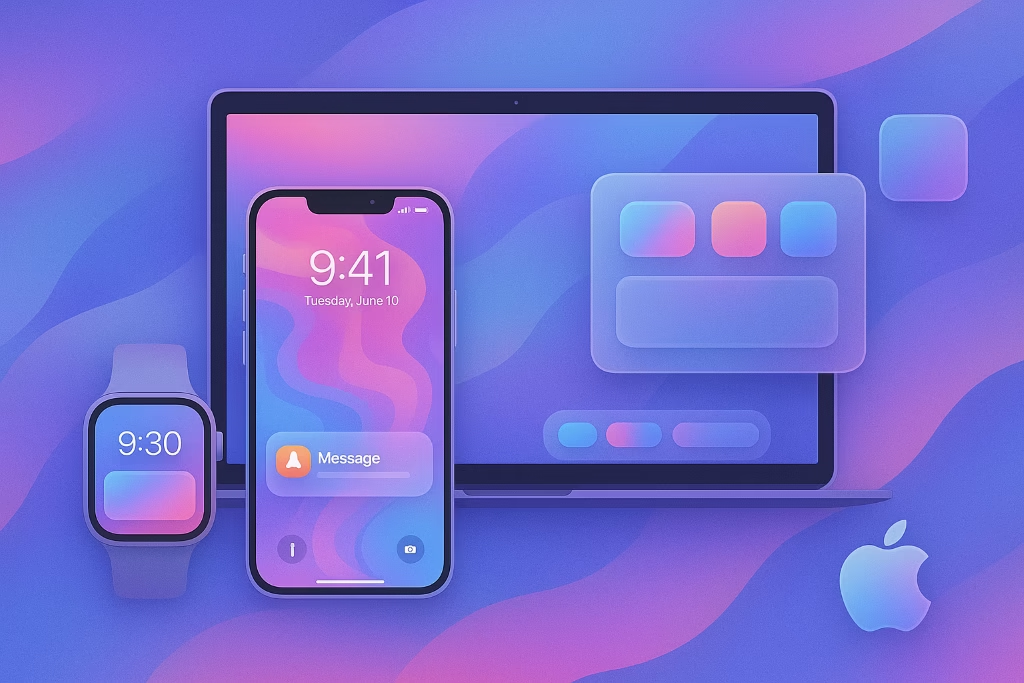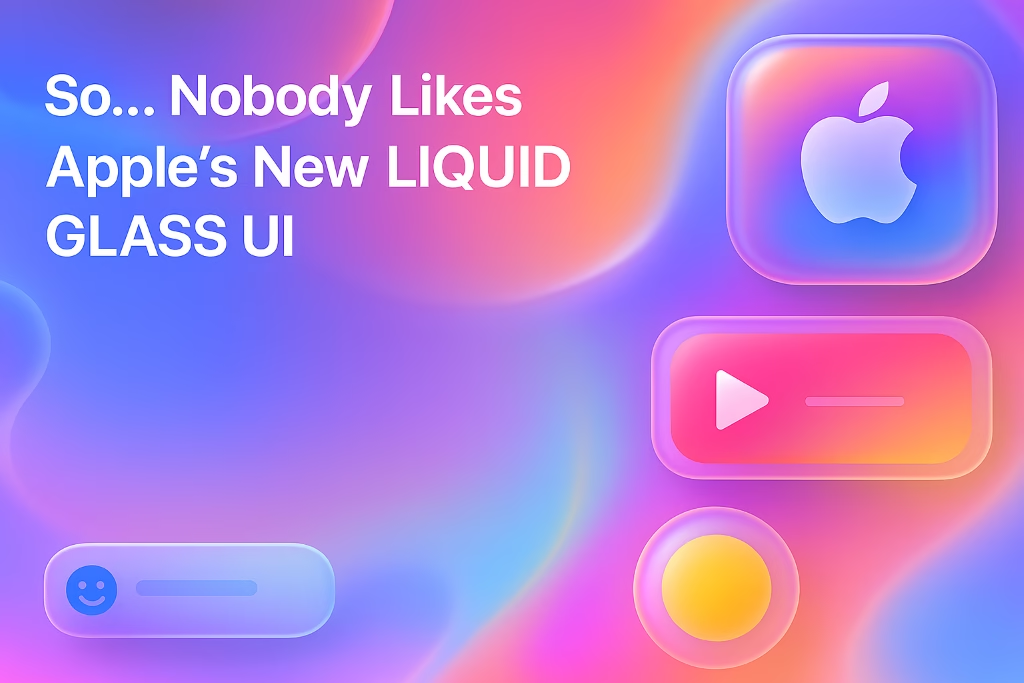Okay, be honest—when Apple dropped the Liquid Glass redesign at WWDC 2025, your first thought wasn’t “Wow.” It was “What happened to my screen?”
It’s giving lava lamp. It’s giving spa brochure. It’s giving… “did my iPhone just get a skincare routine?”
Reddit is roasting it. Designers are debating it. And somewhere deep inside Apple Park, someone’s probably sipping matcha and smiling at all the confusion.
But let’s not write it off just yet. I’m not here to defend it (you’ve got your own taste, hopefully). I am here to unpack the why—because Apple rarely does “weird” without a longer game in mind.
First, What Is Liquid Glass?
Imagine iOS went to an expensive retreat, found itself, and came back with a new aesthetic. That’s Liquid Glass.
Everything looks semi-transparent, soft, and oddly… hydrated. Buttons float. Panels shimmer. Your lock screen now looks like it’s made of fancy soap.
Apple calls it their “most unified design language ever.” And to be fair, it’s everywhere—iPhone, iPad, Mac, Vision Pro, even the Apple Watch. It’s one look to rule them all. Dramatic? Sure. But it’s very on-brand.

Why Apple’s Going All-In on Glass
1. This Started with VisionOS
If the Vision Pro felt like Apple’s sci-fi side project, Liquid Glass is it coming to your daily life.
VisionOS introduced layers, depth, and subtle motion that felt… tangible. Apple wants your phone, laptop, and headset to feel like they’re from the same universe. Because eventually, they will be.
This is the bridge between today’s screens and tomorrow’s realities.
2. The Future Is (Literally) Transparent
Rumor mill says Apple’s working on a 20th Anniversary iPhone—code name: Glasswing. All-glass, edgeless, maybe foldable. Basically, the kind of thing designers draw when they’ve had too much espresso.
Liquid Glass is the teaser trailer. The UI is prepping us for the hardware to come. When your phone is a single sheet of curved glass, you need a UI that plays well with light, shadow, and transparency.
3. The Chips Can Handle It Now
Let’s be real: Apple’s not just being artsy. The A18 chip (and its bigger cousins in Macs) can now handle real-time blur, depth, motion—all the fancy stuff—without breaking a sweat.
Five years ago? Your phone would’ve caught fire. Today? Just another Tuesday in Cupertino.
4. Cleaning Up the Clutter
Apple’s ecosystem was starting to feel like a group project where no one talked to each other. iOS looked one way, macOS another, VisionOS was doing its own thing.
Liquid Glass says: enough. One design language. One vibe. Finally.
It’s not just about looking good—it’s about future-proofing the entire Apple experience.
TL;DR : It’s Not for Now. It’s for What’s Next.
Liquid Glass is weird. It’s overstyled. It makes your icons look like they’re melting into a gel candle. But here’s the catch: it’s not made for your iPhone 15. It’s made for the thing that’s coming next.
The wearable, foldable, ambient stuff. The hardware you haven’t seen yet.
So if it doesn’t make sense now… give it a minute.
And in the meantime? There’s always Dark Mode.


